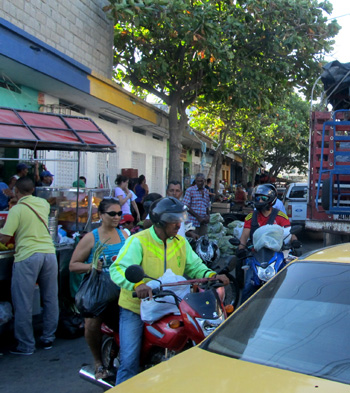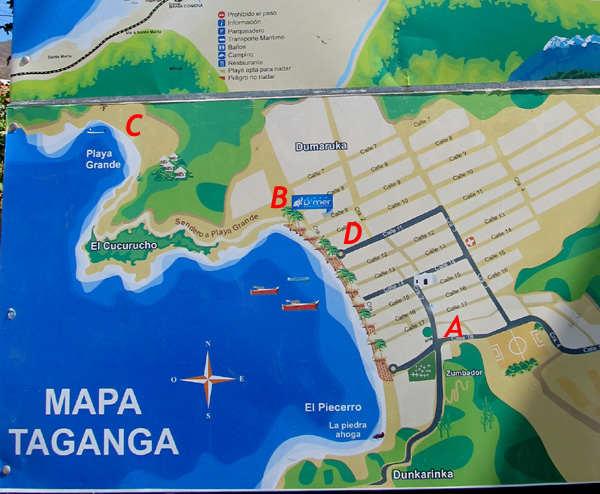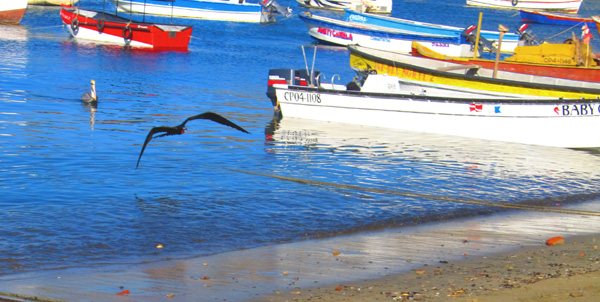|


We found the right bus and the driver said he would take our
dollars—$1 each. The fare is normally about 65 cents in Colombian
Pesos, but we did not ask for change.



The bus stopped at this building under construction which used a swirling
pattern of rocks interspersed with wine bottle bottoms to let in
light.


In Taganga there were all types of signs to commercial enterprises on the pole
where the driver let us off. He pointed us to his left for the playa
(beach).

Later we found this map. I've marked it with red letters for
orientation. The dark blue roads indicate the bus route. We got off the bus at A.
We walked to the beach and then headed toward B.


Barrels of water were on top of buildings for pressure. A builder
works on a cantilevered platform. With no air conditioning, people
occupy their opened windows for the breeze.



Beachside restaurants and bars are all under thatched roofs.

Looking across the beach toward the white hotel built into the side
of the hill—B on the map.


Many frigate birds and pelicans swooped overhead.


Dugout canoes certainly have character.




There are some dive shops in this town.


These fish were used as chum for the dive operators. Why the guy is
wearing a motorcycle helmet was a mystery to us.



As we reached the far side of the beach, locals were waiting for
boat rides. We found a small grocery store
where the clerk would exchange $20 for pesos. When we asked about
public restrooms, she directed us to the hotel.




The restrooms were located near the pool-side restaurant. There is a
great view of the beach from here. We also
loved this beachy hanging there. Next to the hotel, there was a path that
some people were taking, so we followed suit.


The trail included some tires for steps near the hotel, but farther
on, there was little separating us from the cliff.




Finally we could see the other side of the mountain, La Playa Grande—C
on the map.
|